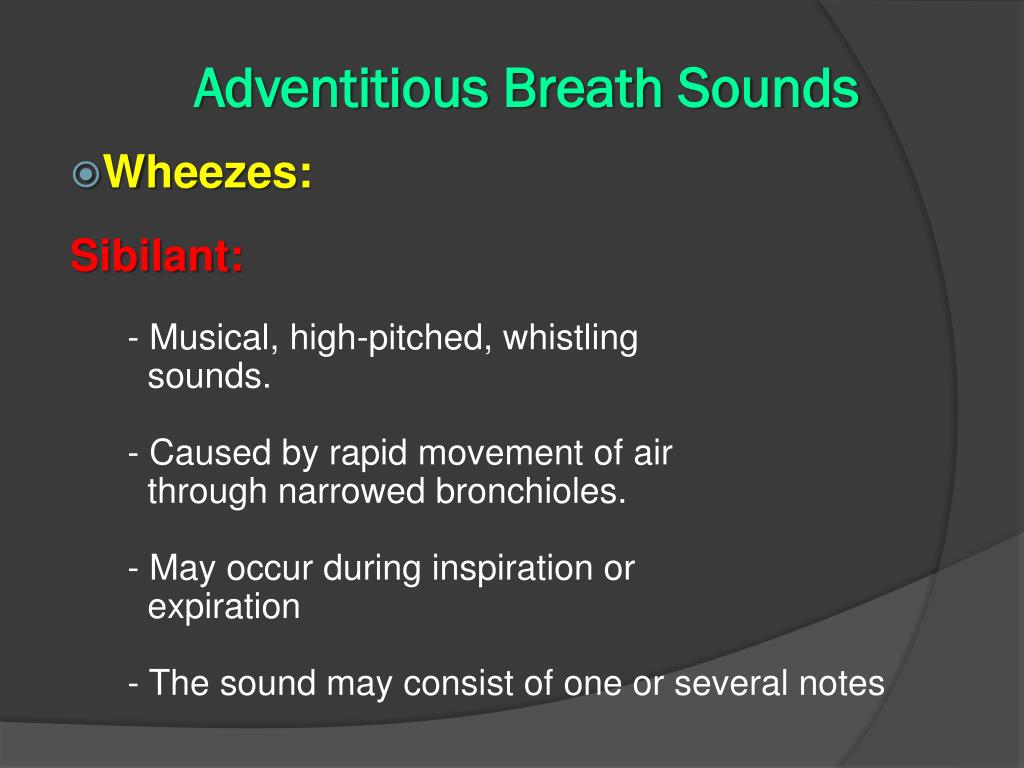

There is also every situation in between these two extremes. Other facilities want all nurses to listen and record all patients’ breath sounds. Some hospitals do not allow any nurses to chart any breath sounds at all. However, there are still many differences in levels of responsibilities among nurses in different hospitals. Today, nurses are taking increased responsibility for assessment of lungs, including auscultation. Listen for normal and abnormal breath sounds.įollowing, we will present detailed outlines of the method for assessment. Listen for intensity of sounds one each side of the thorax (symmetry) Listen to patient to tell you of pain or tenderness when percussing. Listen for symmetry of sounds from each side.

Look for breathlessness wheezing, sputum, cough, cyanosis, pallor, eruptions, nodules, scars, neck vein distention, fingers for tobacco stains, finger and toes for clubbing, which can be a sign of chronic respiratory disease.įeel for masses, nodules, pain, tenderness, examine the: neck, axillae, supraclavicular fossae for lymph nodes, palpate trachea for midline placement. Look for the shape of the thorax evaluate anteroposterior diameter relative to lateral diameter of chest wall, pectus carinatum (pigeon breast), pectus excavatum (funnel chest), kyphosis (spine curvature), scoliosis (lateral spine curvature), kyphoscoliosis, and note tracheal position. Look for the slope of the ribs, bilateral and symmetrical chest wall expansion, abnormal breathing patterns, thoracic or abdominal breathing. Hyperinflation of lungs, impaired expansion, use of accessory muscles of respiration, prolonged expiration and wheezes present.ĭecreased expansion on affected side, hyper resonant or tympanic sounds or even absent sounds in affected areas.ĭecreased expansion of affected side, trachea & heart shifted away from affected side, dullness or flatness or absent breath sounds.ĭecreased expansion on affected side, dull or flat sound or absent breath sounds, trachea and heart shifted toward affected side.īronchial breath sounds, bronchophony, pectoriloquy, possible splinting on the (pneumonia) affected side. COMMON PULMONARY DISORDERS AND PHYSICAL ASSESSMENT FINDINGS USUALLY PRESENT Thus if pectoriloquy is present, it indicates consolidation of some portion of the lung field. Consolidation of the lung tissue causes filling of the air spaces of the alveoli and voice transmission through that part of the lung will be unusually clear and louder than normal. If consolidation is present in a section of the lung field, the whispered voice will sound unusually clear and loud, instead of muffled and distant. Normally the whispered voice will be distant and very muffled through the stethoscope. You will ask the patient to whisper a number or short phrase and repeat it such as counting, “1, 2, 3” “1, 2, 3”, etc. This is another term to determine the presence of consolidation of the lungs. This indicates consolidation, or that there is fluid in the lungs. If the sound changes to “ay” sound, while the patient is saying “ee” then egophony is present. Normally, it will sound muffled, but it will remain with the long sound of “ee” when you listen over most of the lung field. Ask the patient to repeatedly say the sound “ee” while you listen with the stethoscope. This is a term that indicates that there is consolidation of the lung or possible collapse of the lung. This occurs because sound transmission through consolidated tissues will be greater and clearer because dense tissue transmits sound better than normal “fluffy” lung tissue. If it sounds clear through the stethoscope, there is probably consolidation of the lung and Bronchophony is present. When you listen through normal lung tissue, sounds are normally muffled. Normally the sound of “ninety-nine” will sound very faint and muffled. Ask the patient to say the words: “ninety-nine” while you listen through the stethoscope.

Consolidation refers to increased density of the lung tissue, due to it being filled with fluid and/or blood or mucus. This term represents a test to perform on the patient which may indicate that there is consolidation of the lung. Perhaps ask him to breath faster that may enhance the quality of the sounds you are hearing. If you are unsure of what you are hearing through the stethoscope, or if breath sounds are diminished, ask him/her to breathe deeper and/or open the mouth wider. ASSESSMENT OF THE LUNGS AND THORAX CONTINUED ADDITIONAL BREATH SOUNDS


 0 kommentar(er)
0 kommentar(er)
